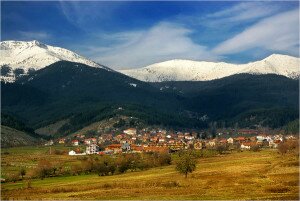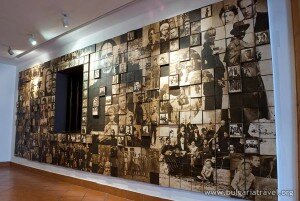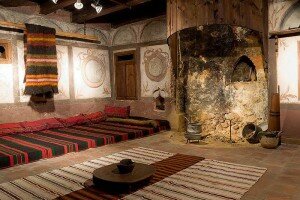Legends & History
There are several legends about who founded Bansko. According to one of them, Bansko was founded by people who lived in Dobarsko, a village in Rila, itself according to a legend founded by the blinded army of Tsar Samuil. Another legend claims that Bansko was founded by an Italian painter by the name of Ciociolino, hence the existence of the name Chucholin in Bansko.
itself according to a legend founded by the blinded army of Tsar Samuil. Another legend claims that Bansko was founded by an Italian painter by the name of Ciociolino, hence the existence of the name Chucholin in Bansko.
Still according to another version it was a Slavic tribe called the Peruns, who lived in Pirin and worshiped Perun, that founded the village later to become a town. There are a number of ethnographic texts, legends, prayers and oratories, which lend credence to this legend.[
There are 130 architectural-historic monuments of culture in the municipality of Bansko at present, 7 of which have national significance. The town has over 100 registered archaeological sites.
The museum complex has at its disposal one of the best and the most excellent functioning museum networks in the country. The museum sites in Bansko are inseparable part of the unforgettable world of the past. The collection of exhibits includes objects of the everyday life of various ages, archaeological treasures, ethnographic materials, unique national costumes, old printed books and manuscripts, original icons and woodcarving masterpieces, rich photographic materials. The museums are with open from 9.00 to 12.00 and from 14.00 to 17.00 h; tel.: ; .
The first museum in the Pirin region was opened to the public in1952, the house-museum ‘Nikola Vaptsarov’.  The documentary exposition includes hall room, in which the native environment, where the poet was grown is represented though a series of photographs ,drawings and written text. It exhibits the original Transcript-of-Bansko from ‘History of Slavonic Bulgaria’, hand-written by the manciple Constantine Chuchuline, personal seal of the poet Peyo Yavorov, old Bulgarian pad, pocket pad of Nikola Vaptsarov, gift of his mother. In the two halls on the upper floor there is section dedicated to the poet’s life after his enrollment in the Marine Machinery School in Varna. Documentary and photo materials are on display , as well as the only published while-living book of poetry ‘Motor Songs’, the reward of the World Peace Council.
The documentary exposition includes hall room, in which the native environment, where the poet was grown is represented though a series of photographs ,drawings and written text. It exhibits the original Transcript-of-Bansko from ‘History of Slavonic Bulgaria’, hand-written by the manciple Constantine Chuchuline, personal seal of the poet Peyo Yavorov, old Bulgarian pad, pocket pad of Nikola Vaptsarov, gift of his mother. In the two halls on the upper floor there is section dedicated to the poet’s life after his enrollment in the Marine Machinery School in Varna. Documentary and photo materials are on display , as well as the only published while-living book of poetry ‘Motor Songs’, the reward of the World Peace Council.
The House of Velyanov is opened in 1977. It is announced as a monument of culture of national significance and is a model of the architectural type of fortified house from the time of the Bulgarian National Revival. It is unique with its mural paintings and wood carved ceilings, made by Velyan Ognev. In its landscapes Velyan Ognev represents the most popular vistas of the largest European cities at the time.
It is announced as a monument of culture of national significance and is a model of the architectural type of fortified house from the time of the Bulgarian National Revival. It is unique with its mural paintings and wood carved ceilings, made by Velyan Ognev. In its landscapes Velyan Ognev represents the most popular vistas of the largest European cities at the time.